Ty the Tasmanian Tiger 3: Night of the Quinkan Designer Diary #2
Krome Studios' Steve Stamatiadis reflects on the development of Ty's third adventure.
Ty the Tasmanian Tiger's third adventure, Night of the Quinkan, was released for the GameCube, the PlayStation 2, and the Xbox last month. In this exclusive designer diary, Krome Studios cofounder and creative director Steve Stamatiadis discusses the development process, character design, and much more.
The Father of Ty
By Steve Stamatiadis
Creative Director & Cofounder
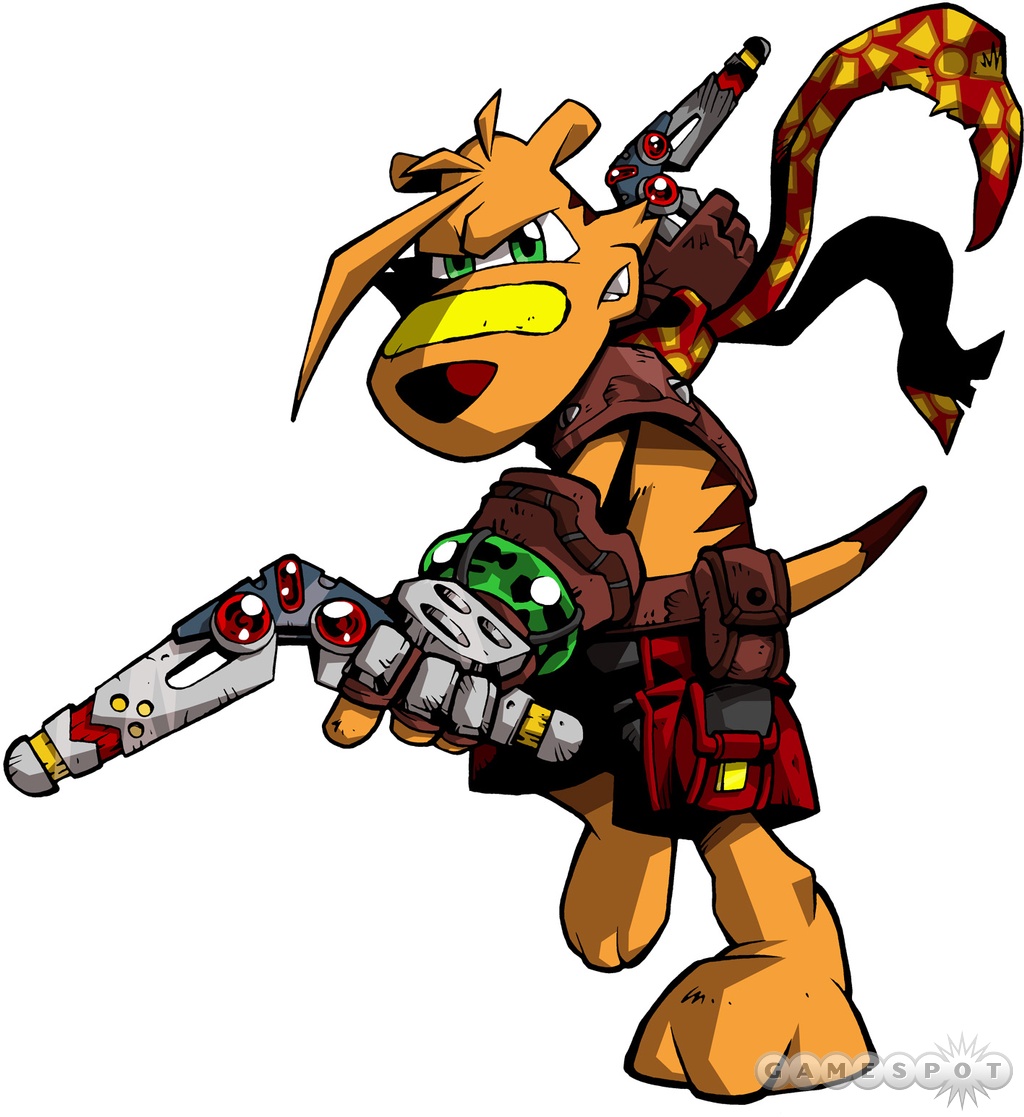
Welcome, stay a while... Stay for... Oops, wrong line. Welcome to this little chat about the art side of the development of Ty the Tasmanian Tiger 3: Night of the Quinkan. I'll be your host for this reading; my name is Steve Stamatiadis. I'm the creative director at Krome Studios to the business world, but to gamers I'm the lead designer and art director on the Ty the Tasmanian Tiger series of games (actually, that's way more fun than the business side of things). I've been working on the Ty the Tasmanian Tiger games since we started work on the first one five years ago. I guess you can call me the "Father of Ty"--at least, that's what my PR person keeps introducing me as when I meet people. But seriously, I admit to being a major force behind our little yellow furry mate, as I created the look and style of all things Ty, including Ty himself. So, needless to say, I know a little about the art and storyline of the series, which we'll touch upon in this diary installment. That said, let me go ahead and fill you in a bit on our latest game, Ty the Tasmanian Tiger 3: Night of the Quinkan.
The Story Starts Here
With previous Ty the Tasmanian Tiger games, the story was something we wrapped around the gameplay to hold it all tighter. We'd always have way more story than would really fit in the games without it getting in the way, so much of it had to sit on the sidelines. Besides, Ty the Tasmanian Tiger is an action platformer--so who really wants to see endless cutscenes of people blabbering away? That said, the story, even in a kid-friendly game, is an important way to drive the player onward toward a final goal. It also helps give a sense of achievement after the completion of missions, because the player can see where it's all leading to, instead of a mission just being a bunch of things to do.
We took a slightly different approach to the story in Night of the Quinkan than we did in the previous Ty the Tasmanian Tiger games. Whereas we had concentrated solely on Ty's story arc on the first two games, with NOTQ, we set out from the start to develop several different arcs for Ty and the major supporting characters like Shazza, Sly, and Fluffy. Any time we ever start working on a Ty story there are usually a bunch of "it would be cool if" or "it would be fun if" points that serve as the basis for the game. For instance, in NOTQ there was the whole issue of a Ty, Shazza, and Sly love triangle. It surfaced on its own in the second game. Ironically, it was originally planned that Ty should have a rival for Shazza's affections back in the first game--a character called Red the Blue Healer was going to play that part. Sadly, he was cut from the first game, so we added him in the second but he never really worked out in that capacity. It wasn't until the final few cutscenes in Bush Rescue that we realized that Sly had come to fit that role much better.
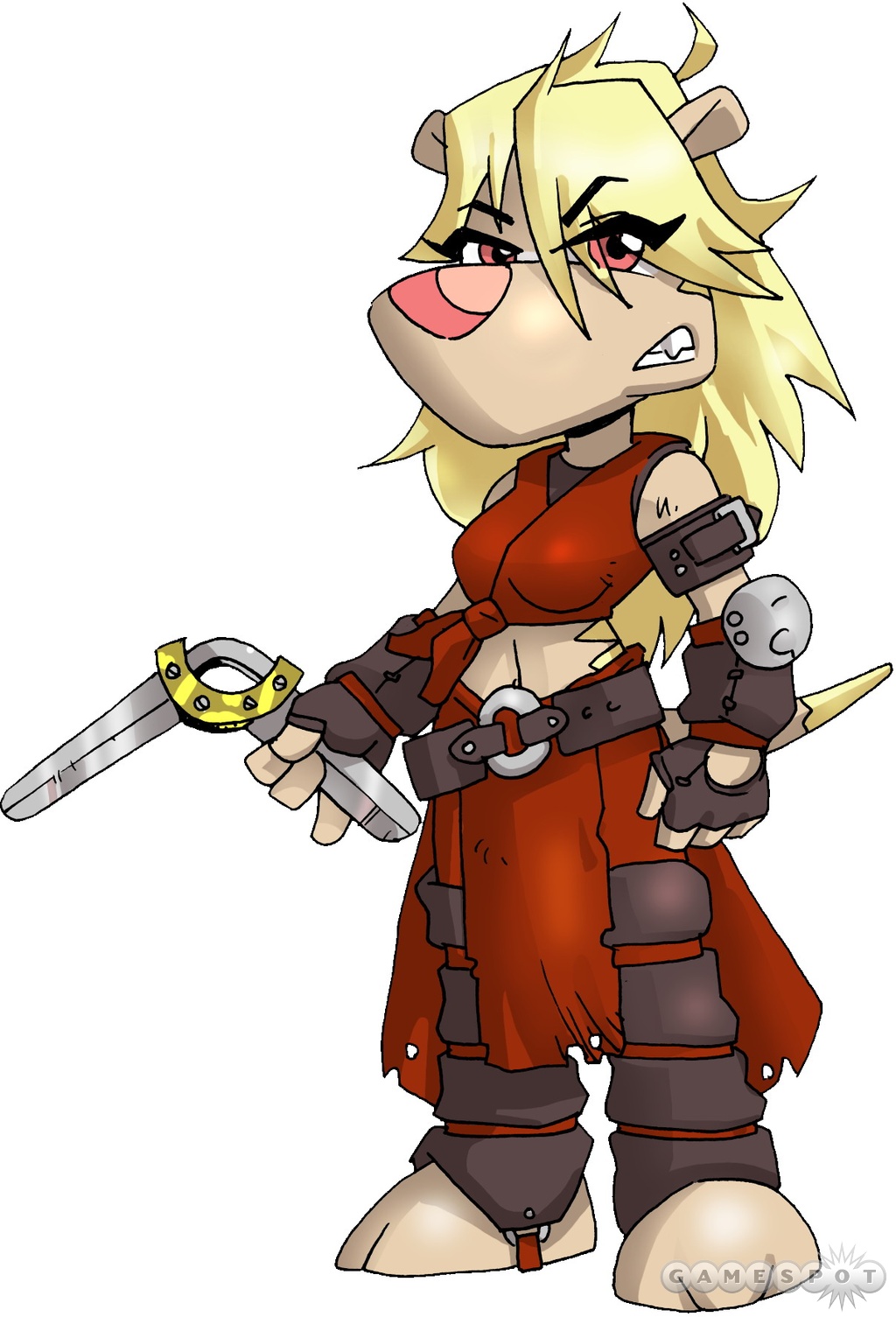
Similar to how kid relationships are in real life, we wanted to have Ty finally realize that he may have romantic feelings for Shazza as his girlfriend, not just as his buddy. With the major plot points and story beats for the main arc worked out, we went back in and added the secondary plot points to fill out the rest of the story. This also gave Night of the Quinkan the feel that a much larger story than in the previous games was taking place, mostly because there actually was a much larger story in progress.
Characters
My favorite part of the game development process. Our approach to designing the characters is very different to just about every other studio out there. Most of the Ty characters start out as drawings first, then we work out how they fit into things. While this process is pretty much backward to the rest of the world--maybe "down under" is a better term--the method has worked really well for us in the past and we'll continue to use it for future projects. After we have the visual cue of a character's design, it really defines most of their character down the line--from dialogue to animation.
As I said, this is the bit of the project that I really love, mostly because I get a real kick out of designing all the different characters. After working for years in the industry, this is the one part of game development that I'm very protective of keeping for myself. One day I may grow tired of doing Ty characters, but I don't see that happening any time soon--Ty's world is so rich and full of possibilities that I can see it going on for a very long time and still having lots of new twists. Still, the question is, how do we come up with so many characters? Actually, believe it or not, it's very, very easy. We're fortunate that Australia is such a rich culture full of interesting animals and environments, but the real truth is that inspiration comes from everywhere. In fact, you only have to look around our office to find dozens of interesting character types to work off. Sometimes, I'll intentionally base a Ty character on one of the team members, and more often than not, I'll draw a character and someone will say that it looks like so-and-so. It's probably my subconscious working there.
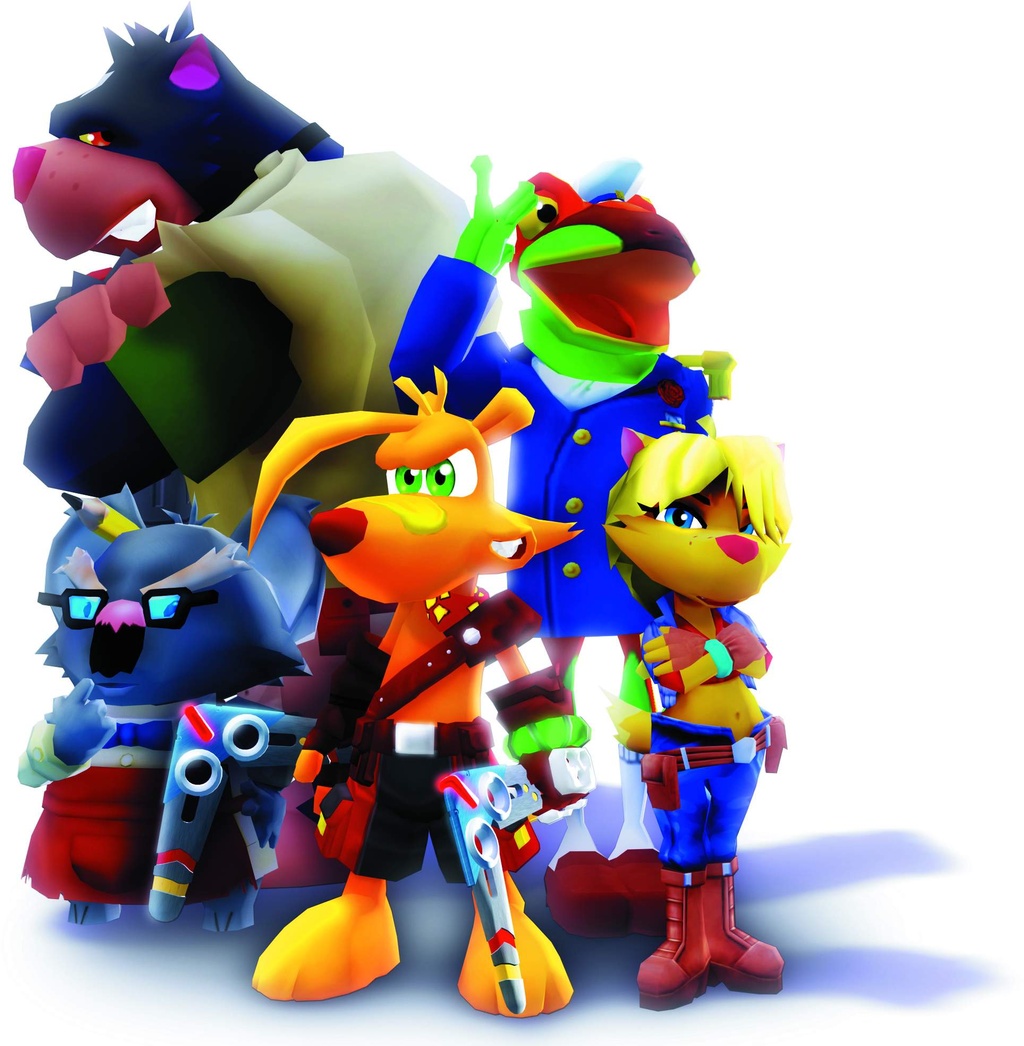
The biggest problem is that I always end up designing way more characters than we could possibly use in a game. So a lot of them get put on hold, waiting to be used in some future Ty the Tasmanian Tiger product. Even then, we still put a lot of characters into the Ty the Tasmanian Tiger games; there have been endless discussions with the team as to whether we should attempt to cut back on the number of characters in the next projects. But we usually decide that the sheer range of characters is part of the series' appeal--it really is an ensemble cast that makes each game work.
I guess it would be remiss of me not to talk about the big new enemy for Night of the Quinkan, especially since they're named in the title. The Quinkan enemies were something that was suggested back in the early days of Ty the Tasmanian Tiger 2: Bush Rescue by one of the artists. It didn't fit into that story, but like a lot of the best Ty ideas, it stuck around; when time came to start throwing around ideas for the third game, I went off and did some research of my own on them. I decided that they'd make a great enemy visually, and did a few versions of what I thought the cave paintings would look like if they were real beings in the Ty universe.
The illustrations of them are pretty much nothing but shadowy stick figures with big dishlike eyes. The first Quinkan design was pretty similar in feeling to the cave paintings, but as I drew more and more of them I started veering away and giving them more variety. At first there was some concern that they might all look too similar, but once they were all in place they each ended up looking markedly different from one another, yet part of a whole... I guess "species" is the right term.
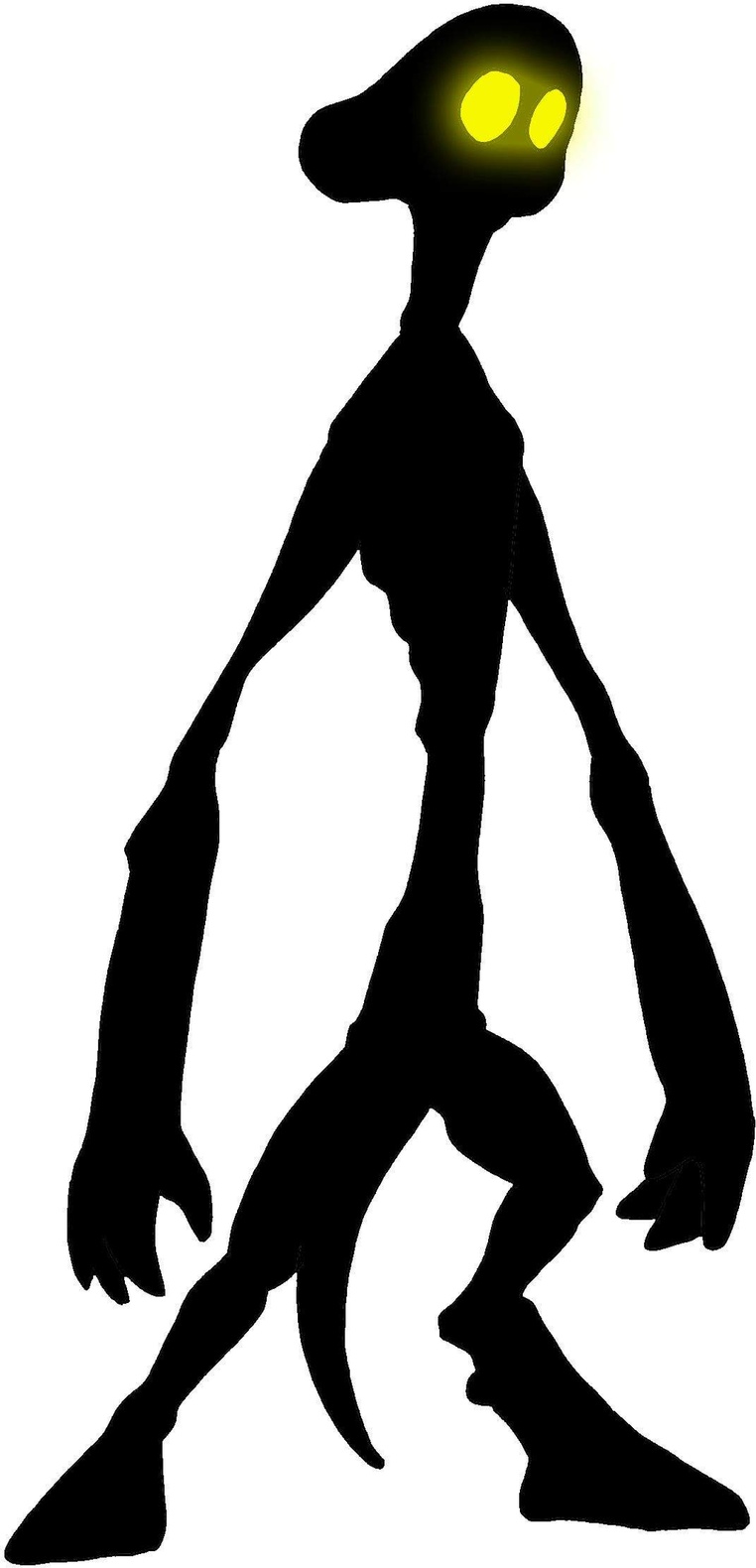
Art for Art's Sake
When it came to the rest of the look and feel of the game, we knew from the very start that it had to be a significant jump from the last title. I mean, that much is obvious. But how do you make everything look better while still on the same generation of console? One of the first things we looked at was making all the characters look better--because that is one of the main things you look at in the game (ah, see now, this gets back to my favorite part of the games). The character team sat down and came up with a system of using radiosity lighting to bake in shadows on the characters. This is a technique that the props department had used to great success on Bush Rescue. We break the game down into elements like actors, props, and rooms to distinguish what is what and who makes it.
Because we were working with a modified version of the Bush Rescue engine, we knew what we could push graphically to make the game look better, and what we could drop without anyone noticing. Of course, it also helps that the engine got souped up before we started, and we knew it could push a lot more polys than the second game.
One of the big things I wanted to accomplish with the look of this year's game was to get it away from the design ghetto that a lot of games aimed at kids tend to occupy. You know--the idea that games for the younger audience have to feature every color of the rainbow on every screen and that text on screen looks like it was written by a 3-year-old. I think a lot of designers tend to follow the stereotypical "kids' look," assuming that's what a younger audience wants. Think back to the stuff you probably liked at age 6 to 8 years old. For me it was stuff like "Speed Racer," "Gigantor," "Spider-Man," and some new kids' movie that was coming out called Star Wars. This meant an overhaul of a lot of the look of the interface--coming up with a new look for even the collectibles icons. Previously, we had used renders, or heads from concept art, for icons that show numbers to collect or fight. This time around, we decided to do stylized representations, with each icon using three colors. It took a few tries to get the right look, but once we had that, the rest fell into place and we had a whole new look for the game. I even went in and storyboarded a new look to the classic collectible claim animation.
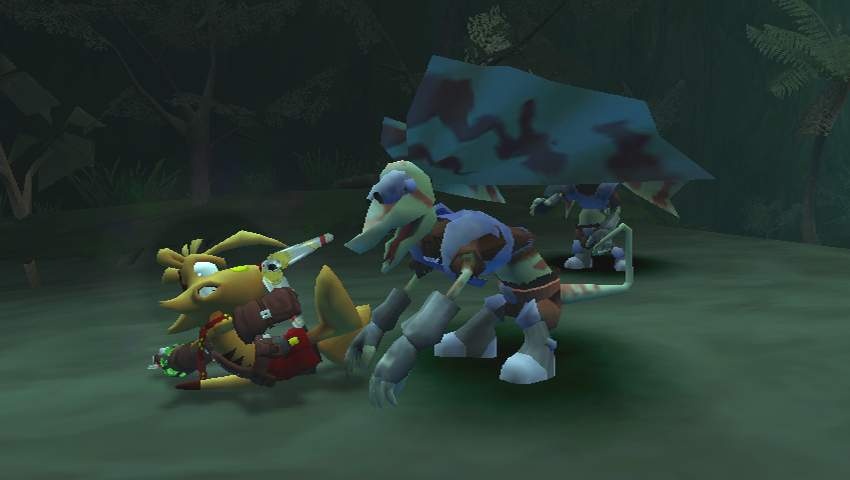
So, visually we went for a darker look, but darker as in evening and nighttime--figuring the Quinkan looked like they belonged in a shadowy world. The color palette of the levels changed accordingly, but we didn't go for the traditional boring blue-grey worlds. We took the bright colors of the previous titles and added the purples to the shadows to get that evening magic-hour feel. I guess that was a lot of the method behind the whole look and feel of the game. Our aim was to take the world from the previous two Ty the Tasmanian Tiger games and put it in a darker situation and have the characters react to it in their own way, as opposed to the creators of the sequels of other games, who changed the entire feel of their games to make it darker.
Of course, part of all this darkness brings up the point of the new lighting system that was specifically developed for Night of the Quinkan. Now, Ty would pass close to lights and be lit properly by them. We'd previously had a version of this that didn't quite work. So it was nice when we did get it to work smoothly, and Ty really looked like he belonged in the environment--unfortunately it did bring up a few unforeseen issues: Now the prop team had to go back in to the models for dozens of props and set up light sources for them--a task that they did with little complaint, and the results of the programmers, artists, and designers working together brought the visual look of the game to a new level.
Not All Fun and Games
I'd love to say the project ran really smoothly and it was really easy to make. While Night of the Quinkan moved reasonably well, it was because we had to start this game running and finish it within approximately a year and a half. That's no easy feat. However, it's a little easier when you have an experienced team, which, thankfully, we had--all of our leads had worked on the previous Ty games, so they knew what we needed. As for the rest of the team, there was a bit of turnover, with people moving on to other projects at the start, so we had to bring in some new Kromans to fill the void. That's part of the problem of being a developer with multiple teams--and we're running three at the moment. Time, or lack of it, did turn out to be the biggest issue--there was a lot of stuff we would like to have included but had to drop early on in the project to make sure we could get it done on time.
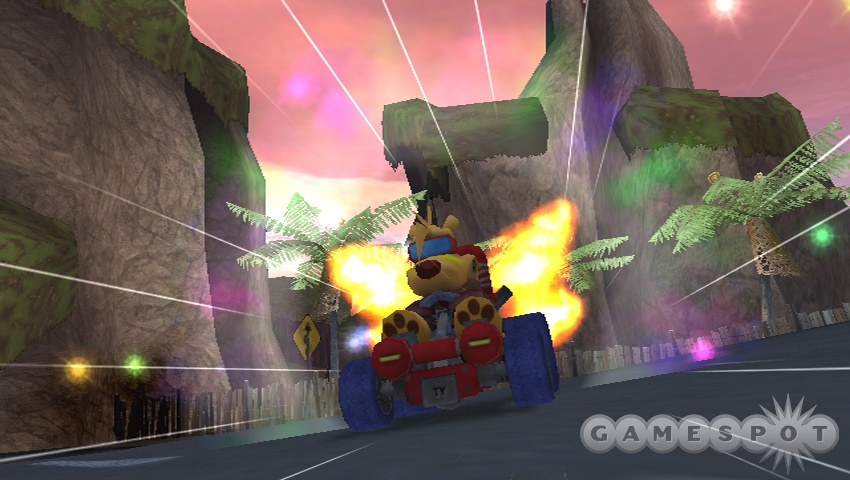
Thankfully, we managed to get all the cool bits in that we wanted, but we were always worried that there might not be enough content in the game. In the past we've overcompensated and put in way too much, only to have to drop half-finished but cool ideas. This time around we were much harsher in the beginning. We worked out a number of missions based on the second game, then we went through all the ideas and rated them on how cool we thought they were. Only the best features were included so that we could spend more time on game polish. I have to say that it can be heartbreaking when you have a cool idea for a level but you realize that the amount of work to do it will be equal to making three other levels, so you have to drop it. In the end, though, our fears of a short game were unwarranted; the final game really feels complete.
So in the end, we managed to pull together another installment, with better visuals, gameplay, and story. So keep your eyes open: I reckon Ty the Tasmanian Tiger 3: Night of the Quinkan will surprise a few people who are just expecting more of the usual from a kids' game. But that's only the end of the current chapter. We're already looking at new directions in which to take our striped little mate. Again the challenge will be to keep true to our roots and give people something new and fun to play. It's never an easy task, but it's one we relish and look forward to.
Got a news tip or want to contact us directly? Email news@gamespot.com
Join the conversation